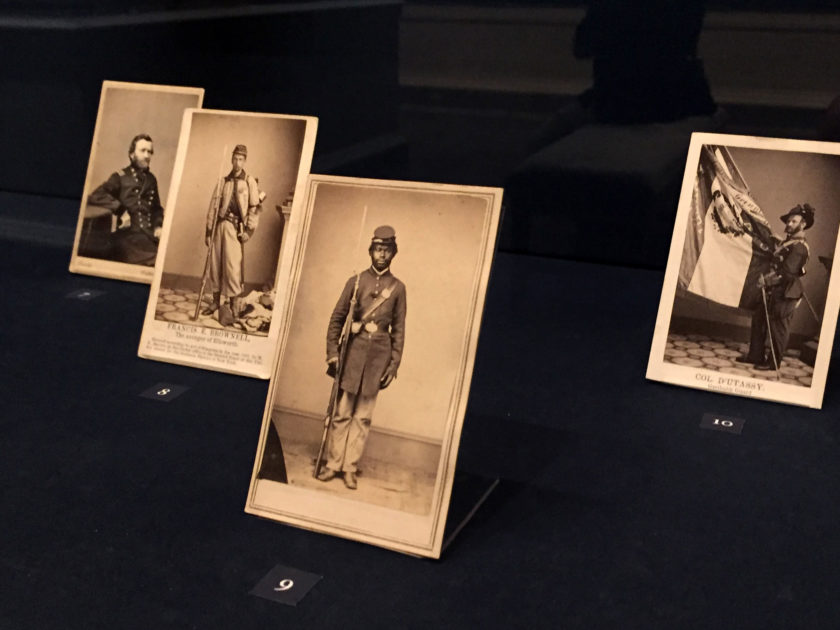The National Gallery of Art celebrated the 180th birthday of photography in style. “The Eye of the Sun: Nineteenth-Century Photographs from the National Gallery of Art,” open to the public through December 1, 2019, features approximately 140 images from the first half-century of the medium. Visitors strolled through themed rooms filled with stunning examples of the early processes—Louis-Jacques-Mandé Daguerre’s unique images on polished plates of silver, and William Henry Fox Talbot’s photogenic drawings and salted paper prints.

A few days before the opening, Curator of 19th-century Photographs Diane Waggoner spoke to media at a press preview. MI Editor and Publisher Ronald S. Coddington followed up with her after the event for more details about the contributions of American photographers, the impact the Civil War had on photography, and the connection between collectors and curators.
Q: You mentioned during the comments that American photographers seemed especially attracted to the daguerreotype, even more so than their European counterparts, who also practiced Talbot’s process. Why do you think Americans were so enamored by the daguerreotype? What made them eventually move away from the daguerreotype?
Information on how to make a daguerreotype arrived on American shores before Talbot’s process, so the first excitement surrounding making photographs in America was with the daguerreotype. Once improvements were made to the process to make it viable for taking portraits (which happened very quickly), the daguerreotype offered a business opportunity. You see a wide variety of craftsmen, mechanical and scientifically minded men, and tradesmen opening up daguerreotype studios. Talbot’s process was patented and it spread much more slowly. There was also not as robust a tradition of amateur practice in America as in Europe, and it was amateurs and artists who took up paper processes in Europe at first before it became more commercial.
Americans moved away from daguerreotypes once viable paper and glass processes were introduced in the 1850s. There was a period of time during that decade when most photography studios offered both daguerreotypes and paper and glass processes. But eventually, with the introduction of the wet collodion glass negative, it won out over the daguerreotype – it could achieve a high level of detail and was reproducible and was not difficult to see, so it offered advantages over the daguerreotype.
Q: How do you summarize the contribution of American photographers to the first 50 years of the medium?
American photographers truly mastered the daguerreotype process, gaining a reputation for the beauty and quality of their daguerreotypes over their European counterparts. They were also very enterprising. It took longer for photography to be perceived as an artistic genre in America than in Europe, though. In the 1860s, American photographers pioneered war photography and photography of exploration with images of the American West and the railroads. American George Eastman revolutionized photography at the end of its first fifty years with the introduction of the Kodak camera.

Q: How does the Civil War figure into this period?
The Civil War saw the first sustained use of photography in multiple ways during a war—portraiture, cultivating a celebrity culture, medical documentation, military use, copying documents and recording military construction, such as railroads, encampments, other forms of army transportation, and documenting destruction. And it was also used aesthetically to mark the devastation and loss of the war.
Q: How about the Gallery’s Civil War photographs?
We had just acquired Gardner’s Sketch Book within the last six months, so of course that was going to be included in the exhibition. We do have other cartes de visite and portraits related to the Civil War, but we would like to build the collection further.
Q: The MI audience includes many private collectors and dealers focused on Civil War portrait photography. How do you view their participation as caretakers of these photographs? What is their role in preserving history? How do they connect with private and public institutions like yours?
I find that private collectors and dealers are absolutely critical to preserving the legacy of the Civil War. They are the ones on the front lines recognizing the importance of these works and finding them. I have learned a great deal from visiting collectors and dealers and viewing their collections. In the past, we have borrowed from collectors when organizing exhibitions that require loans. And of course we are always looking to acquire works from such sources.
SPREAD THE WORD: We encourage you to share this story on social media and elsewhere to educate and raise awareness. If you wish to use any image on this page for another purpose, please request permission.
LEARN MORE about Military Images, America’s only magazine dedicated to showcasing, interpreting and preserving Civil War portrait photography.
VISIT OUR STORE to subscribe, renew a subscription, and more.

